Book: Bury Me Deep, by Megan Abbott (2009)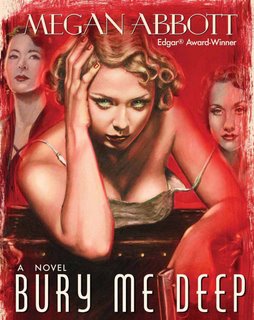 It’s been so hot in Seattle that I can barely string two ... dammit, it’s on the tip of my tongue. You know, a unit of language that acts as the principal carrier of meaning. Anyway, I can barely string two of those things together, but I can’t let any more time pass without singing this book’s praises. It’s that good.
It’s been so hot in Seattle that I can barely string two ... dammit, it’s on the tip of my tongue. You know, a unit of language that acts as the principal carrier of meaning. Anyway, I can barely string two of those things together, but I can’t let any more time pass without singing this book’s praises. It’s that good.
Abbott’s follow-up to the Edgar Award-winning Queenpin is inspired by “Trunk Murderess” Winnie Ruth Judd. Normally, I’d link to some background on the case, but you won’t find a better summary than the one Abbott provides at the end of her novel. Besides, you don’t want to know too much about how actual events played out, especially when Abbott deviates from the facts to unearth a larger story.
In 1931, Marion Seeley is alone in the strange city of Phoenix after her drug addict husband takes the only job he can get south of the border. Innocent young Marion becomes friends with both a nurse at the clinic where she works and the nurse’s tubercular roommate. She also becomes fascinated by their lifestyle, entertaining wealthy businessmen. Marion falls for one of these men, learning some disturbing truths about her own needs and desires. Abbott describes this intimate struggle for control in evocative language that can blindside you with its force.
Then things get worse, and Abbott lays that out in a relentless manner that would do Cornell Woolrich proud.
Hell, just look at the cover. You know you want to read it. Go ahead.
Friday, July 31, 2009
Monday, July 27, 2009
DVD: Golden Age Noir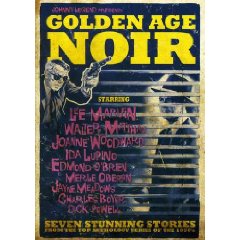 The role of television is an under-reported chapter in the evolution of film noir. The small screen supplemented and eventually supplanted the B movie, attracting talent from both sides of the camera. Many of these shows, episodes of various anthology series of the 1950s, no longer exist.
The role of television is an under-reported chapter in the evolution of film noir. The small screen supplemented and eventually supplanted the B movie, attracting talent from both sides of the camera. Many of these shows, episodes of various anthology series of the 1950s, no longer exist.
Cultural impresario and freelance wild man Johnny Legend is doing his best to rectify the situation. His Raunchy Tonk Video label has released Golden Age Noir, a DVD containing seven blasts from the past. They’re from a variety of series, with an emphasis on name actors.
Sound Off, My Love (Four Star Playhouse, 1953). Merle Oberon stars as a woman too vain to admit she requires a hearing aid. She relents only to discover that she hasn’t been fooling anyone – but several people have been fooling her. Starts slow but picks up thanks to direction by old noir hand Robert Florey (Danger Signal).
Dark Stranger (the premiere of The Star and The Story, 1955). Edmond O’Brien is a pulp writer who falls in love with a woman (Joanne Woodward) who may be his own creation. It bears a resemblance to Stranger Than Fiction.
The Squeeze (Four Star Playhouse, 1953). Gambling house owner Willie Dante (Dick Powell, who played the role several times) gets pressured by the ne’er-do-well son of a crusading D.A. Sharp script by Blake Edwards – have I mentioned I’m still on a Peter Gunn kick? – and direction by Robert Aldrich.
F.O.B. Vienna (Suspense, 1953). Hooey about an American engineer caught up in European espionage. Director Robert Mulligan strains against the limitations of live TV. It’s a dud, but it stars Walter Matthau, so what are you gonna do?
House For Sale (Four Star Playhouse, 1953). A house-hunting Ida Lupino encounters escaped lunatic George Macready. Minor fun.
Counterpoint: The Witness (1952). A true rarity, the sole episode of a cop series starring Lee Marvin several years before M Squad. It’s about a botched robbery and the resulting murder of a burlesque clown. With some great gritty locations and a few odd David Lynch-style moments, but it’s easily the worst of the bunch. The show is set over three city blocks but features more walking than the Lord of the Rings trilogy.
A Place of His Own (Four Star Playhouse, 1953). A mentally damaged WWII veteran is coerced by his family into taking the blame for a murder he didn’t commit. The winner, hands down, with a fine performance by Charles Boyer.
The disc is a fascinating peak into a neglected era of film noir. Johnny’s already got a second volume set for release next month, along with a sex-and-drugs Dragnet compilation that I should order right now.
Sunday, July 26, 2009
Movie: Bunco Squad (1950)
It’s been a strange week. Several new projects cropped up, and I ceded control of the television to Rosemarie for five nights so she could watch Torchwood: Children of Earth.
I was able to squeeze in a few short items, like this movie recorded off TCM in the wee hours. How could I resist a title like Bunco Squad? Plus it’s about phony psychics, and you know how I feel about them.
Robert Sterling is the wooden detective in the titular unit. His aspiring actress girlfriend is played by Howard Hughes discovery Joan Dixon. Hughes certainly had a type: skittish brunettes who couldn’t convey fear if their hair was on fire. Sterling, at the request of a lieutenant who has never missed a meal, engages in some baffling police work to track down a ring of sham spiritualists. They’re led by Ricardo Cortez, more animated here than he was playing the first Sam Spade. Their target is a kindly rich woman mourning her dead son. Sterling’s brilliant plan is to set Dixon up as another fake fortuneteller, preying on the poor grieving mother’s emotions for the greater good. I’m sure the idea made sense to Lieutenant Are-You-Going-To-Finish-That on paper.
Bunco Squad is crap, but it’s fast-moving crap. Director Herbert Leeds churned out entries in the Cisco Kid, Charlie Chan, Mr. Moto and Mike Shayne series, so he knew how to move things along. There are some interesting tidbits explaining how mendacious mediums work. Dante, once known as “king of magicians,” appears as himself, aiding the police in their inquiries. You also get a ridiculous fight scene a la Mummenschanz. And Cortez and his cronies can only kill people by tampering with their brake lines. It happens not once, not twice, but three times in 67 minutes. Not that that establishes a pattern or anything.
DVD: The Paul Lynde Halloween Special
Why did I watch this now? Good luck trying to rent it in October. You can’t get near the thing. The Lynde special aired exactly once in 1976, and was then thought lost. They haven’t found the full eight-hour cut of von Stroheim’s Greed, but they did dig this one up.
It features every All Hallows’ Eve staple: witches, CB radio, and sketches spoofing Valentino. There’s also Kiss making their TV debut, but none of their numbers is anywhere near as scary as Florence Henderson’s rendition of “That Old Black Magic.”
Also on the show is Roz (Pinky Tuscadero) Kelly. Pinky is the character she played on three episodes of Happy Days. That’s how she’s billed. Lynde even announces her name that way in the wrap-up. It’s like putting an expiration date on her fame. “You’ll get fifteen minutes if you’re lucky, sweetheart.”
Here, for your viewing pleasure, is the closing disco number. Don’t let the three-minutes-plus running time fool you. It seems much longer.
Tuesday, July 21, 2009
Cocktails: Words of Wisdom
"A proper drink at the right time – one mixed with care and skill and served in a true spirit of hospitality – is better than any other made thing at giving us the illusion, at least, that we’re getting what we want from life. A cat can gaze upon a king, as the proverb goes, and after a Dry Martini or a Sazerac Cocktail or two, we’re all cats."
- From Imbibe!: From Absinthe Cocktail to Whiskey Smash, a Salute in Stories and Drinks to “Professor” Jerry Thomas, Pioneer of the American Bar, by David Wondrich
Truer words never written, and ones that came back to me last night in my favorite bar while enjoying a variation on the Battle of New Orleans.
Sunday, July 19, 2009
Books: Bulletin From Hard Case Crime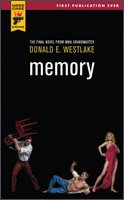 An extraordinary piece of news from Hard Case Crime this weekend. In April 2010 they will release Memory, a never-before-published novel by the late, great Donald E. Westlake. Westlake’s friend Lawrence Block provided them with the manuscript. Barring any additional discoveries, it will be the last novel we get from one of the greats. The opening chapter already has me clamoring for more.
An extraordinary piece of news from Hard Case Crime this weekend. In April 2010 they will release Memory, a never-before-published novel by the late, great Donald E. Westlake. Westlake’s friend Lawrence Block provided them with the manuscript. Barring any additional discoveries, it will be the last novel we get from one of the greats. The opening chapter already has me clamoring for more.
DVD: On Guard (1997, U.S. 2001)
This sumptuous swashbuckler was recommended by author and fellow OSS 117 enthusiast Walter Satterthwait. It’s truly the kind of film they don’t make any more. Considering that it took four years to find an American distributor, they seldom release them, either.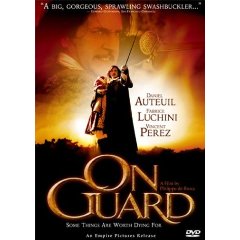 An acrobat and child of the road who falls in with a nobleman during Louis XIV’s reign must raise his friend’s young daughter in secret to protect her from a scheming relative. This movie has it all: hissable villains, hidden identities, real estate swindles, and hunchbacks aplenty. Plus too many swordfights to count. Technically, it should be called En Garde.
An acrobat and child of the road who falls in with a nobleman during Louis XIV’s reign must raise his friend’s young daughter in secret to protect her from a scheming relative. This movie has it all: hissable villains, hidden identities, real estate swindles, and hunchbacks aplenty. Plus too many swordfights to count. Technically, it should be called En Garde.
Or Le Bossu, as it was known in France. (The novel by Paul Féval, a contemporary of Alexandre Dumas, has been filmed six times.) There’s so much story that the third act felt a touch frantic; it’s the rare movie that would be benefit from being a few minutes longer. The conclusion initially gave me pause, but it’s all of a piece with the film’s swooning tone. Grand, old-fashioned entertainment. Thanks for the tip, Walter.
Movie: The Hurt Locker (2009)
I’ve been meaning to say this for a week. You won’t see a better action movie, suspense film, or drama this summer. Get out there and support this one.
Friday, July 17, 2009
Miscellaneous: Dick Tracy Meets The Phantom
In November 2008, the Los Angeles Times website featured this article on Warren Beatty’s federal lawsuit over control of the character Dick Tracy. Beatty bought the rights to the detective two decades ago and made the Oscar-winning 1990 film. According to the article:
The sale allowed Tribune, the original publishers of the classic strip, to take back the rights if Beatty didn’t film another project.
Tribune, which owns the Los Angeles Times, recently sent Beatty a letter saying time is up and it is reasserting control of the character. But the actor claims he should retain the rights because he started filming a Dick Tracy TV special earlier this month.
Imagine my joy upon opening the July issue of Now Playing, the Turner Classic Movies program guide, and seeing the following listed as airing as part of their salute to the character on July 18 at 7PM EST:
Dick Tracy Special (2009). Leonard Maltin interviews Warren Beatty as Dick Tracy, while film clips trace the history of the comic strip detective. BW&C30m.
I circled it in the schedule, and had the DVR ready to go.
Check the schedule now. Airing at 7PM EST on July 18 is Role Model: Gene Wilder, an interview with the comic actor by Alec Baldwin. I saw it when it first aired. It’s a fine show, as Mark Evanier will tell you. But it lacks the zest that only contractual obligation can bring.
In a March 25, 2009 Chicago Tribune article, Beatty’s attorney says, “He sold [the special], even though the contract doesn’t require him to do that. The contract doesn’t even require him to finish it. He just has to start it.” The article also notes that in promotional materials, “the half-hour movie chat between film critic Leonard Maltin and Tracy (played by Beatty), is simply called ‘innovative.’”
The special is listed as being in post-production in the IMDb. I honestly hope that Beatty completes it, and that it turns up on TV eventually. Something tells me it’ll be a hoot.
Monday, July 13, 2009
Book: Preston Sturges by Preston Sturges (1990)
Yes, I’m feeling much better now. Thank you for asking, and for the many cards and letters. It’s your strength that keeps me going.
My convalescence was sped along by reading Preston Sturges’ memoir, adapted and edited by the filmmaker’s widow Sandy from material Sturges was writing at the time of his death. I was hoping to glean some insight into that five year stretch, unparalleled in movie history, when Sturges made one dazzling comedy after another. The Lady Eve, The Palm Beach Story, Hail The Conquering Hero, so many more.
On that score, I was disappointed. Sturges doesn’t head for Hollywood until the last quarter of the book, and most of those pages chronicle frustration and financial woes. His advice is worth taking, though.
Money is not star material. One should never have enough of it, or enough lack of it, to allow of its playing a principal role.
If I’d had Sturges’ childhood, I’d have lavished attention on it, too. His mother Mary was a peripatetic Auntie Mame type. Whatever her flaws, she showed her son that the world was a place of great possibility. Through her, Preston met countless interesting people. He briefly shared a room with silent screen siren Theda Bara. Occultist Aleister Crowley called him a “brat.” His mother gave Isadora Duncan the scarf that led to her death.
Glamorous ocean voyages, romance with heiresses, disaster avoided with the help of wealthy benefactors. Sturges’ early years were out of a Sturges movie. Only someone who led a charmed life could make films so blithe. Yet another reason to be disappointed.
The Sturges family has set up a terrific website dedicated to the man and his work. Pay special attention to his eleven rules for box office appeal.
Maybe it’s better not to know too much about people whose work you admire. I thought that after reading Lawrence Block’s recent memoir, in which he evinced little interest in the questions I would have asked him. Maintaining a touch of mystery is a good thing, maybe a necessary one. Albert Brooks often talks about his odd friendship with Stanley Kubrick, who called him full of praise after seeing Modern Romance. (Kubrick told him he’d wanted to make his own film about jealousy, which became Eyes Wide Shut.) They spoke on the phone often, but when Brooks suggested meeting in person Kubrick said it would be a bad idea. After Francois Truffaut raved about James Toback’s Fingers, Toback wanted to get together. Truffaut declined, saying, “Let’s continue to communicate with each other through our films.” And then there’s the time Mel Brooks ... why don’t I let Mel tell the story?
Tuesday, July 07, 2009
Miscellaneous: Missive From My Deathbed
The title is pure hyperbole. A particularly intractable sinus infection has held me in its grippe for over two weeks. I feel like I can only muster a few hours of concentration per day, and those are needed for the paying gigs.
Example: Just now I was unable to think of the word hyperbole. I wandered into the other room and asked Rosemarie, “Isn’t there a term that means the use of exaggeration as a literary device?” I really ought to go back to watching baseball highlights, but with the Mets’ season going the way it is and my delicate condition, I could trigger something.
Still, I want to give. So I’ll say that I devoted my Independence Day ration of cogent hours to Michael Mann’s Public Enemies and was glad I did. I’ll also say that I’ve added Donna Moore’s Big Beat from Badsville to the links page, and you should be checking it out regularly.
Here’s how addlebrained I am. I almost tied together three articles I read today – Cass Sunstein’s exploration of how association with like-minded individuals breeds extremism; Roger Ebert’s levelheaded response to those who disagreed with his review of the Transformers sequel; and an analysis of how porn is abandoning plot and going fuck scenes only – with the Bing advertising campaign that gives me night sweats in an epic post about our mile-wide, inch-deep, instant-gratification culture. Then I remembered I was me and said to hell with it.
So instead, here’s Slate’s article on stuntmen’s favorite stunt movies. Along with one in its entirety, Claude Lelouch’s blistering Rendezvous. Watch to the end. It’s tres French.
Friday, July 03, 2009
Too Soon Gone: The Noir Legacy of Fabián Bielinsky
An edited version of this article appeared in the May/June 2009 issue of the Noir City Sentinel. To subscribe, become a member of The Film Noir Foundation.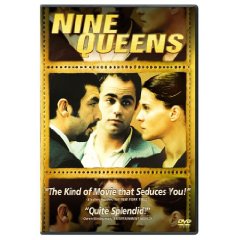 Two movies. That’s not much of a legacy. But the brief filmography of Argentina’s Fabián Bielinsky is enough to prove that, with his death in 2006, world cinema lost more than a gifted storyteller. After watching Nueve Reinas (2000) and the darkly glittering jewel El Aura (2005), Film Noir Foundation founder Eddie Muller said he was “so miserably sure that Bielinsky would have been the greatest writer-director of contemporary noir.”
Two movies. That’s not much of a legacy. But the brief filmography of Argentina’s Fabián Bielinsky is enough to prove that, with his death in 2006, world cinema lost more than a gifted storyteller. After watching Nueve Reinas (2000) and the darkly glittering jewel El Aura (2005), Film Noir Foundation founder Eddie Muller said he was “so miserably sure that Bielinsky would have been the greatest writer-director of contemporary noir.”
Born in Buenos Aires in 1959, Bielinsky earned his stripes as an assistant director on over 400 commercials and numerous feature films. During this fifteen-year apprenticeship he worked on projects as varied as an ad directed by German auteur Wim Wenders and Eversmile, New Jersey (1989), an oddity about an itinerant dentist fated to be remembered as the other movie Daniel Day-Lewis made the year of his Academy Award-winning triumph in My Left Foot. In 1998, Bielinsky received his first above-the-line credit as one of three writers of the allegorical science fiction film La Sonámbula (Sleepwalker). He longed to make his own movies but felt hamstrung by an industry dominated by established names and prejudiced against genre fare. He ultimately made the transition to the director’s chair the way so many of the greats did – by winning a contest. The Patagonik Film Group selected his screenplay out of 350 entries in a 1998 competition, giving Bielinsky a green light and a modest $1.3 million budget. The resulting movie revolutionized Argentinean filmmaking.
Nueve Reinas (Nine Queens) is a con man caper with a distinctive Latin flavor, seasoned by the corruption endemic during Argentina’s fiscal crisis of the 1990s. Veteran grifter Marcos (Ricardo Darín) bails novice Juan (Gastón Pauls) out of trouble for his own selfish reasons; he needs a partner for the day, and his usual sidekick is unavailable. Marcos gives Juan a crash course in the art of the short con. Among his pearls is knowing when to act aggrieved. “The more offended you are, the less suspicious you look,” he advises his protégé. But plans change quickly when an aging confederate presents Marcos with a “once in a lifetime” opportunity – unloading a forgery of the title sheet of Weimar Republic stamps on a shady financier poised to flee the country. To make the score Marcos reaches out to his estranged sister, Juan risks his own nest egg, and each man will have to trust the other.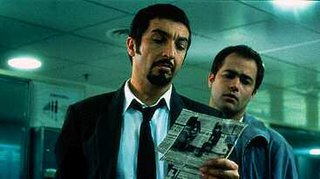 Bielinsky’s film is ferociously entertaining. Breezy yet tense, packed with reversals and plot complications but never difficult to follow, culminating in a note-perfect ending. Much of the film’s impact can be traced to the bravura sequence when Marcos points out to Juan the countless “mustard chuckers ... operators, swindlers” hiding in plain sight on the streets of Buenos Aires, watching for any hint of vulnerability on which to pounce. Bielinsky’s on-the-fly technique, which Darín described as “almost as if we were carrying out a raid or pulling off a heist,” only adds credibility. Nueve Reinas posits a world of tricksters and thieves, leavened by the wounded insistence of all involved that they are not crooks. Even the acquaintance offering Marcos a motorcycle with minor damage, namely a “small caliber” perforation in the gas tank, bristles at the accusation. It’s all just business.
Bielinsky’s film is ferociously entertaining. Breezy yet tense, packed with reversals and plot complications but never difficult to follow, culminating in a note-perfect ending. Much of the film’s impact can be traced to the bravura sequence when Marcos points out to Juan the countless “mustard chuckers ... operators, swindlers” hiding in plain sight on the streets of Buenos Aires, watching for any hint of vulnerability on which to pounce. Bielinsky’s on-the-fly technique, which Darín described as “almost as if we were carrying out a raid or pulling off a heist,” only adds credibility. Nueve Reinas posits a world of tricksters and thieves, leavened by the wounded insistence of all involved that they are not crooks. Even the acquaintance offering Marcos a motorcycle with minor damage, namely a “small caliber” perforation in the gas tank, bristles at the accusation. It’s all just business.
Hollywood took note of Nueve Reinas’s international success, but Bielinsky resisted the call. An Americanized version happened without him. As remakes go, Criminal (2004) is not at all bad. It has a nice sense of scale, a game cast featuring John C. Reilly and Maggie Gyllenhaal, and a feel for the multicultural vibe of Los Angeles, beautifully shot by cinematographer Chris Menges. Producers Steven Soderbergh and George Clooney turn it into a scruffy, low-key cousin of their Ocean’s Eleven films. (Soderbergh cowrote the adaptation with director Gregory Jacobs under the name Sam Lowry, the Brazil-inspired pseudonym he used on The Underneath, his 1995 retooling of the classic noir Criss Cross.) Criminal’s primary problem is that it simply cannot compare with the movie that spawned it. It lacks the danger and unpredictability of Nueve Reinas. Some of the best beats and lines from Bielinsky’s film had to be cut because they were unique to the original’s setting. Take the ending. There’s no way it could be used in an American film. Actually, scratch that. It might work now.
Nueve Reinas has a jaundiced view of human relations, but Bielinsky’s noir sensibility would not reach full pungent bloom until his follow-up effort. El Aura, known as Dawn in Argentina, is a singular achievement, a truly existential film that comes across as an unholy combination of Richard Stark and Oliver Sacks. Its cunning use of traditional genre elements – fate, choice and chronic blackouts – makes it one of the finest cinematic noirs of this decade.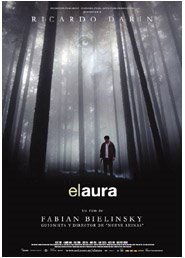 We meet the film’s nameless protagonist (Ricardo Darín again) lying amidst a swirl of ATM receipts, seemingly rehearsing for his own chalk outline. He’s not dead, just suffering from an epileptic fit. The character works as a taxidermist, bloodlessly applying logic to recreate the savagery of animals. As a colleague notes, he has “a weird fantasy for a taxidermist who’s never gotten in a fight with anyone,” and that’s plotting perfect heists he lacks the nerve to carry out. “It can be done neatly. It can be done well ... There’s no reason why anyone should die,” Darín insists. “Yes, there’s a reason,” his skeptical colleague replies. “There’s a load of guys with guns.”
We meet the film’s nameless protagonist (Ricardo Darín again) lying amidst a swirl of ATM receipts, seemingly rehearsing for his own chalk outline. He’s not dead, just suffering from an epileptic fit. The character works as a taxidermist, bloodlessly applying logic to recreate the savagery of animals. As a colleague notes, he has “a weird fantasy for a taxidermist who’s never gotten in a fight with anyone,” and that’s plotting perfect heists he lacks the nerve to carry out. “It can be done neatly. It can be done well ... There’s no reason why anyone should die,” Darín insists. “Yes, there’s a reason,” his skeptical colleague replies. “There’s a load of guys with guns.”
Darín gets an unlikely chance to put his theories to the test. While on a hunting trip he accidentally kills a man, only to discover that his victim was an underworld figure whose plan to rob the local casino is already in motion. The taxidermist can step into the dead man’s role and live the fantasy he has long imagined.
Bielinsky’s growth as a filmmaker, from the effervescent charm of Nueve Reinas to the command on display in El Aura, is hugely impressive. Much of the latter movie plays with minimal dialogue, communicating information purely through images. Consider the sheer elegance of the way Bielinsky uses details in the background of shots to convey that the taxidermist’s wife has left him. He immediately follows this revelation with an extraordinary series of edits moving Darín from his apartment to the lush greenery of the Patagonian countryside. Darín suffers a seizure when he’s alone in the woods about to bring down a deer, and thanks to Bielinsky’s kinetic treatment of the incident we experience it right along with him.
But it’s the robbery scenes that showcase Bielinsky’s mastery. Early in the film, Darín waits with a fellow taxidermist to cash his check. As Darín explains how he’d loot the place, his scheme comes to life. It’s beautifully choreographed mayhem, the sad sacks in line behind them abruptly transformed into icy professionals, Darín and his associate blithely commenting on the action. Contrast this with the botched factory job that occurs halfway through the movie. Darín is no longer conductor but bystander. The sequence deftly illustrates the power and the impotence of bearing witness as Darín reacts to every gunshot and cry of agony, trying to piece together what went wrong.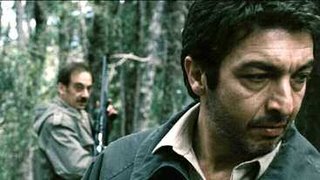 El Aura has style to burn, but Bielinsky knew that true noir is about character. He has an able collaborator in Ricardo Darín. The actor shines playing a man who takes refuge in his intellect as he finds his masculinity constantly questioned. He’s at his best during a halting speech to the dead man’s wife in which he explains the not-altogether-unpleasant sensation (the aura of the title) that precedes one of his neurological episodes: “There’s a moment, a shift ... things suddenly change ... The fit is coming, and there’s nothing you can do to stop it. Nothing. It’s horrible ... and it’s perfect. Because during those few seconds, you’re free. There’s no choice. No alternative. Nothing for you to decide.”
El Aura has style to burn, but Bielinsky knew that true noir is about character. He has an able collaborator in Ricardo Darín. The actor shines playing a man who takes refuge in his intellect as he finds his masculinity constantly questioned. He’s at his best during a halting speech to the dead man’s wife in which he explains the not-altogether-unpleasant sensation (the aura of the title) that precedes one of his neurological episodes: “There’s a moment, a shift ... things suddenly change ... The fit is coming, and there’s nothing you can do to stop it. Nothing. It’s horrible ... and it’s perfect. Because during those few seconds, you’re free. There’s no choice. No alternative. Nothing for you to decide.”
That sense of inevitability pervades the movie, ratcheting up the tension and coloring the taxidermist’s actions. Darín has ample opportunity to walk away from the situation, but his refusal to do so – or even to recognize those moments of opportunity – adds force to the ending, which is as bleak as can be. For the taxidermist everything has changed, but nothing is different. Chilling stuff.
Special mention must be made of the dead man’s dog, who alone knows that Darín has disposed of his master. Easily noir’s greatest canine since Pard in High Sierra. And both of Bielinsky’s movies make reference to a shadowy figure known as “El Turco,” integral to each plot but never appearing onscreen. One can’t help but speculate that future Bielinsky films would have drawn us deeper into the Turk’s demimonde.
El Aura did not achieve Nueve Reinas’s level of exposure in the United States. It was distributed via the Independent Film Channel’s First Take series, released on demand and in theaters simultaneously. This approach makes films available to a wider audience – your correspondent saw El Aura on TV on “opening night,” a full three months before its truncated big-screen run in Seattle – but at the expense of publicity. Even being named one of 2006’s best films by The New York Times’s A.O. Scott didn’t garner El Aura additional attention.
Hollywood again made overtures to Bielinsky, but he continued to spurn them. He said it would take a different type of movie to tempt him to America. For crime dramas he would remain in his native Argentina, where he could “keep full control.” Bielinsky undoubtedly had the right idea. It’s unlikely that a studio would give him free rein to make a thriller as spare and unsettling as El Aura. On June 26, 2006, El Aura swept Argentina’s film awards, taking home prizes for best picture, Bielinsky’s script and direction, and Darín’s performance among others. Two days later, in a hotel room in São Paulo, Brazil where he was casting a TV commercial, Fabián Bielinsky died of a heart attack at age 47, leaving behind a wife and a young son.
On June 26, 2006, El Aura swept Argentina’s film awards, taking home prizes for best picture, Bielinsky’s script and direction, and Darín’s performance among others. Two days later, in a hotel room in São Paulo, Brazil where he was casting a TV commercial, Fabián Bielinsky died of a heart attack at age 47, leaving behind a wife and a young son.
Two movies. That’s all we’re going to get. Considering the innate understanding of noir that Fabián Bielinsky showed, it’s nowhere near enough.
Wednesday, July 01, 2009
Extra, Extra!: Noir City Sentinel
The July/August issue of the house organ (keep your snickers to yourselves) of the Film Noir Foundation hit in-boxes around the globe this morning. At an epic 33 pages, it’s no longer a newsletter but a magazine.
Including for your reading pleasure:
* An extensive interview with writer/director Arnold Laven!
* Eddie Muller’s profile of Belita, the figure skating Ice Queen of film noir!
* Philippe Garnier’s astonishing article on a pair of jailbirds who found success as screenwriters in 1930s Hollywood!
Plus, this issue of the Sentinel features the byline of yours truly not once but twice, on a survey of the Catholic noir of John Farrow and a book-versus-film comparison of Nightmare Alley.
You know you want to read it. Kick in a few bucks to the Film Noir Foundation and enjoy.